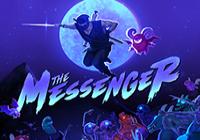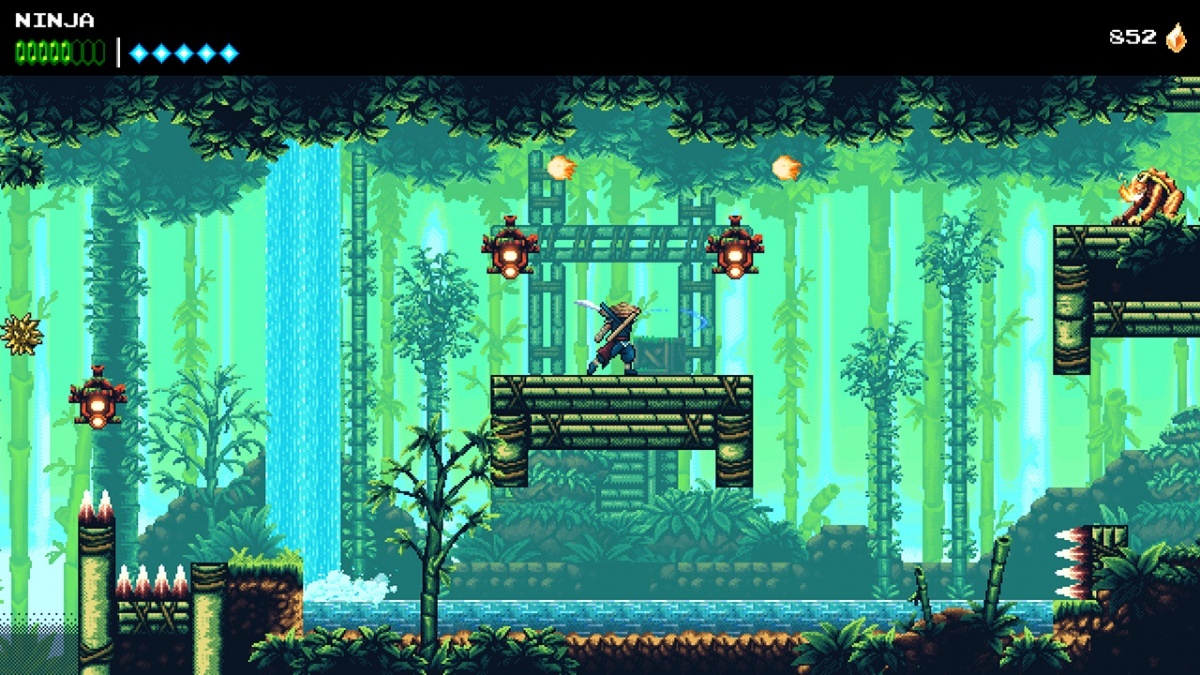The Messenger (Nintendo Switch) Review
By Athanasios  31.08.2018
31.08.2018

The one whose words you are reading right now hates the original Ninja Gaiden with a seething fury. Indie, platform-hack n' slasher, The Messenger, pays homage to the NES... classic, thus it's safe to assume that it will bring forth the same kind of sentiments to those - few - who feel the same about it. Luckily, the end result is actually far better, and tries being something more than an imitation that cares more about that '80s, 8-bit aesthetic and overall feel, although the end result leaves something to be desired.
A Kung Fury-like title screen, NES-era audio-visuals, an intro that feels like it came from an unreleased Ninja Gaiden IV, and a bunch of equally same-y sprites, especially when it comes to the main sword-wielding hero. Above everything else, though, it's The Messenger's core experience that's strikingly similar to Temco's line of platformers. This is basically a fast, run-and-sword (and shuriken) action-platformer that will make those who have spend their childhood with a NES controller in their hands feel right at home…
...and it's better. Much better than Ninja Gaiden, with the main reason being that controlling the main hero doesn't feel like controlling a worthless brick, and, the second one being how the level design rarely feels unfair (if ever), as there are no semi-impossible leaps and annoying enemy placement (looking at you, Ninja Gaiden eagles!). Plus, the Ninja-dude in here has more tricks up his shinobi shōzoku sleeve. Many fans of the latter will probably think this to be stupefyingly easy to play, yet there's no need to worry.

Along with the traditional wall jump, as well as some minor, additional skills, one can also 'cloudstep;' a neat ability that lets you jump right after slashing a damageable prop, foe, or, later on, enemy projectile; an ability that must definitely be mastered. While this initially won't seem very eager to take advantage of its mechanics to challenge the player, it does later on - not through artificial, NES-hard unfairness, but with a clever use of enemies and traps, which forces you to be mindful of what's on-screen, and very careful with the timing of each jump and slash.
Death will eventually come, though, and at this moment a little flying demon will appear, who, in exchange for your revival at the nearest checkpoint, will follow you around for a bit, stealing any crystals you will found along the way - a perfect incentive to try and stay alive, especially since this cute critter is one of the best when it come to taunting. As for the crystals themselves, they are the in-game currency, and can be exchanged in a shop for some nifty updates - and while these are nothing to write home about, the shopkeeper definitely is.

Those who prefer skipping dialogue in action games (reviewer guilty as charged) are advised to talk to this robed fellow whenever they get the chance to, as his deadpan humour, as well as his satire of many of the industries' clichés, make him the best character in the whole game - it's not like the rest of the cast doesn't contribute to the comedic aspect at hand (especially the bosses), but it's just that the shopkeeper simply takes the cake, icing, and all.
Bear in mind that The Messenger is very old-school, in the sense that it's tons of fun to play, but, like many action-oriented titles of the NES period, whether that's Ninja Gaiden, Castelvania, or even Batman, it suffers a bit on the replay value side. The various mechanics on offer work like a dream, and the level design is certainly more than decent, but, to be perfectly honest, gamers nowadays want more… or maybe that's just this lonely reviewer.

This 'more' comes after three to four hours into it, where it leaps from an 8-bit style to a 16-bit one, introducing a welcome audio-visual upgrade to the, already beautiful, caverns, forests, and temples, and the catchy tunes available... but, in all honesty, Ninja Gaiden's music remains far more kickass. As for the gameplay, it will start to feel like a metroidvania, rather than a pure action-platfomer, with the Ninja having the ability to swap between the two "realms" in order to overcome certain obstacles.
Sadly, while an innovative concept, this is where The Messenger's main flaw comes into view. This would definitely benefit from focusing on one thing only; either, be a linear action title, or a deep, open-ended, exploration one. Furthermore, the much smaller action bit, which soon ends up feeling like a long introductory chapter, is actually far better than the metroidvania one by a long shot. A game not worth your time? Far from it. Sabotage Studio's creation is highly enjoyable, despite it feeling like a title that had the potential to be even better.

Cubed3 Rating
Very Good - Bronze Award

Sabotage Studio proves its worth by delivering an title that pays homage to Ninja Gaiden but is actually better than its source material; one that nails both the 8-bit, and 16-bit aesthetic. The problem is that, although definitely a fun title, the way it is torn between being a "pure" action-platformer and a metroidvania really hurts what could otherwise be one of the year's best indies.

![]() 7/10
7/10
![]() 0
(0 Votes)
0
(0 Votes)
 Out now
Out now  Out now
Out now  Out now
Out now  Out now
Out now Comments
Comments are currently disabled

 Sign In
Sign In Game Details
Game Details Subscribe to this topic
Subscribe to this topic Features
Features





 Top
Top

